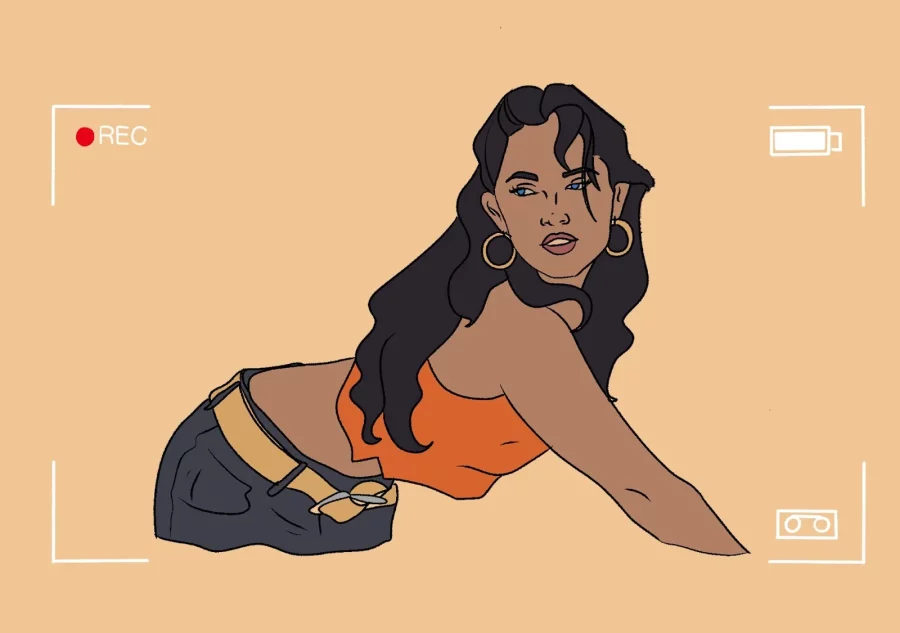The feminist term ŌĆ£The male gazeŌĆØ means the media industry is objectifying women to gain the male desire framed by the directors/ producers, so basically, portraying women through a heterosexual and a masculine lens and to be visually pleasing for the male viewers which actually affects our todayŌĆÖs society.
The male gaze can be created by choosing the dress codes, body language, audio and camera angles. Directors usually dress the women in a very ŌĆ£sexyŌĆØ stereotypical way, like leather and the camera pans are just to show the body, and in slow motion and low camera angles. Even if a male viewer isn’t attracted to the person on the screen (TV, music videos and advertisements) they will be affected.
Laura Mulvey introduced this term back in the 70s in her essay ŌĆ£Visual Pleasure and Narrative CinemaŌĆØ which we can sadly still relate to after almost 5 decades! She exposed how women in Hollywood are portrayed and how mainstream films are focused on pleasing male scopophilia (the sexual pleasure of looking).
The male gaze has a very negative impact on women in real life as it influences how women view themselves and how they should act and look ŌĆ£to be good enoughŌĆØ just to impress the men. All of this can 100% affect their mental health and result in being insecure about themselves. Also, the male gaze can lead to body shame, women compare themselves to other ŌĆ£sexyŌĆØ female characters shown in the media. Men can also look at women very differently, in a very sexualised way which leads to harassment and rape.
A report released by Plan International back in 2018 analysed the gender imbalance, 30% of female actresses showed revealing clothing, whereas only 7% of men did. 15% of women and 8% of men were partially nude and 2% of females were completely naked compared to only 0.5% of men!
For example, the video clip Peaches- Rub which was removed from youtube, it’s way more explicit than Nicki MinajŌĆÖs videos, the music video ŌĆ£RubŌĆØ is very dirty and unbearable where they show fully naked bodies being extremely sexualised and orgies while showing sex acts and signs of BDSM. The director used different camera shot angles from low to high angles and close-up shots just to make the women more visible to the men which enhances the male gaze because the producers and directors think that ŌĆ£sex sellsŌĆØ and that they are trying to normalise it.
To conclude, the male gaze shapes how women are viewed, not just on the screens but in our daily lives. They focus on revealing clothes and camera angles on how women can attract men which affects us as women and controls how we should act and how we should look.
How do you think we can change that so women can’t be this sexualised and objectified?
References:
What is the male gaze? criticisms of the male gaze in media – 2023 (no date) MasterClass. Available at: https://www.masterclass.com/articles/what-is-the-male-gaze (Accessed: 25 November 2023).
Loreck, J. (2016). Explainer: what does the ŌĆśmale gazeŌĆÖ mean, and what about a female gaze? [online] The Conversation. Available at: https://theconversation.com/explainer-what-does-the-male-gaze-mean-and-what-about-a-female-gaze-52486.
George, K. (2015). How music videos challenged the male gaze in 2015. [online] Dazed. Available at: https://www.dazeddigital.com/music/article/28899/1/how-music-videos-challenged-the-male-gaze-in-2015.
Battisti, L. (2021). The Male Gaze: What is it, and How Does it Impact Women? [online] A News Education. Available at: https://www.anewseducation.com/post/the-male-gaze.
VISUAL PLEASURE AND NARRATIVE CINEMA (UK, 1975) Mulvey, Laura; MacKenzie, Scott Berkeley: University of California Press; 1 Film Manifestos and Global Cinema Cultures, 2014, p.359-370; Ebook Central – Academic Complete UKI Edition
Rob Bliss Creative (2014). 10 Hours of Walking in NYC as a Woman. YouTube. Available at: https://www.youtube.com/watch?v=b1XGPvbWn0A.

